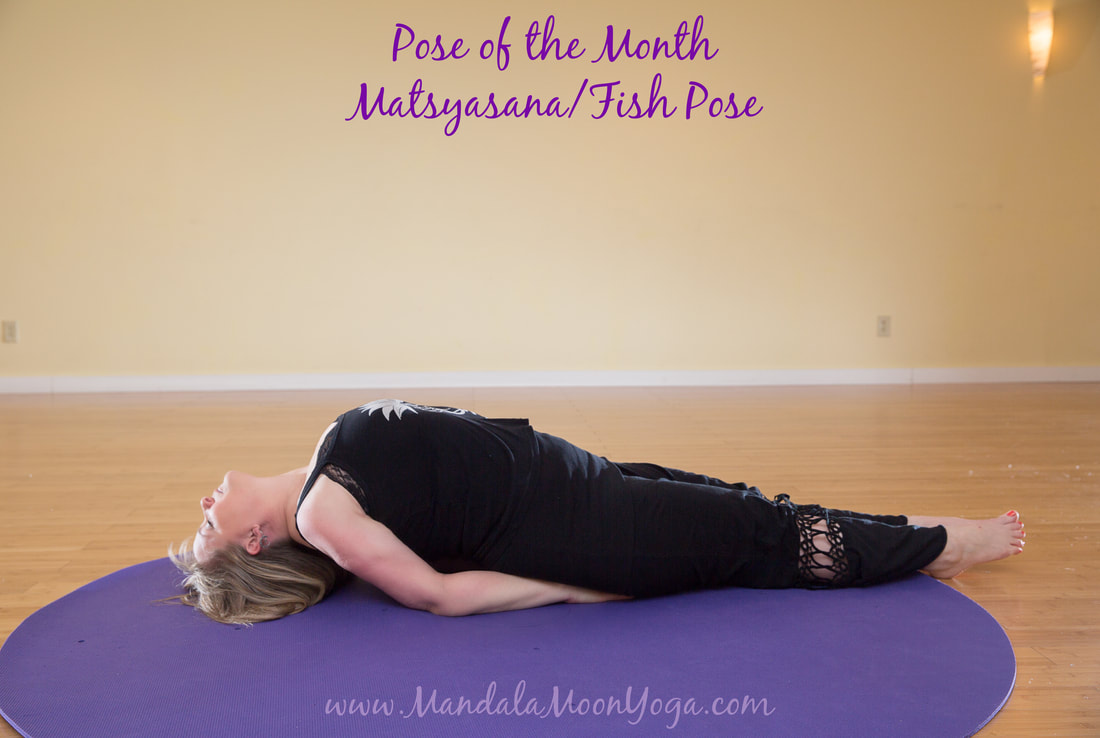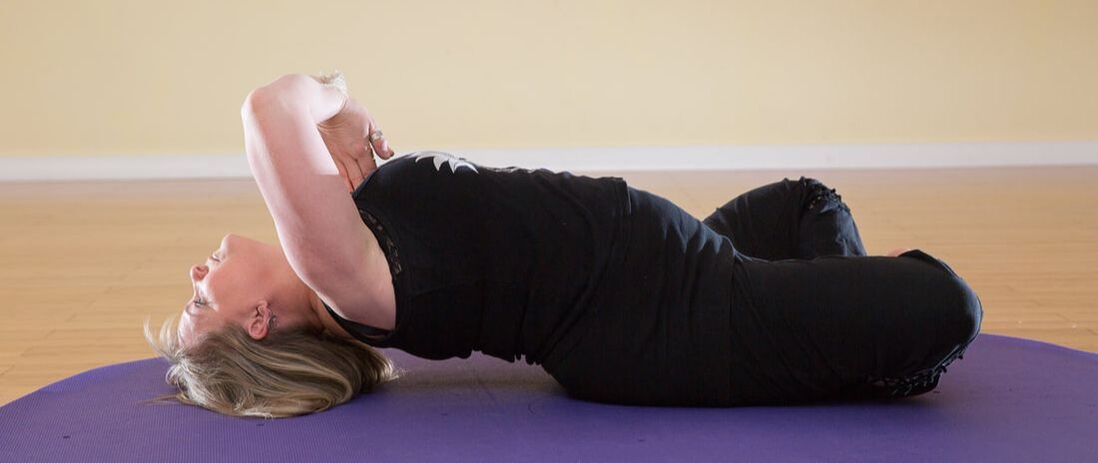Sanskrit:
Matsya = fish; asana = pose
(mot-see-AH-sah-nah)
Benefits/Purpose:
This pose strengthens the arms, back, and the back of the neck. It stretches the hip flexors (psoas) and muscles between the ribs (intercostals), stimulates the kidneys and liver, and it releases tension in the neck and shoulders. It opens the chest and improves circulation in the lungs.
Precautions:
As always, check with your healthcare provider before beginning any physical practice. If you have high or low blood pressure, thyroid conditions, migraines, low back, neck or shoulder issues, try the propped restorative version. Be careful to keep weight on your arms to protect your neck.
How to Practice:
- Lie on your back with your knees bent and feet on the ground hip distance apart. Rest your arms alongside your body with your palms down.
- Lift your hips, and bring your hands under your body, palms down. Press arms into sides of body. Extend your legs out straight and bring them together. (If this strains your back, keep them bent.)
- Roll your shoulders back, and press your sacrum, forearms, and elbows into the floor. Draw the shoulder-blade tips in, and lift your chest and head off the ground.
- Continue to lengthen your spine from between the shoulder blades to the base of your skull. Keep lifting the chest and lengthening the back body to bring your head back until it just touches the floor. All weight should be on your forearms and elbows, not your skull! Relax your neck and face.
- Keep pressing your forearms down and lifting the chest. Draw the tops of your thighbones down. Press your tailbone toward your heels. Let go of any tension that is not directly involved with maintaining the shape of the asana. Soften your eyes, jaw, and throat.
- Sit up with legs straight out in front of you and hands on the floor at your sides. Now move your hands back an inch or so and lower the forearms to the ground with upper arms perpendicular to the ground. Roll your shoulders back, and lift your chest. Lengthen the upper part of your spine, and release any tension in your neck or at the base of your skull. Keep the back of your neck long, as an extension of the spine.
- Restorative: Use a large bolster under your upper body to support spine and head.
- Bring legs into Lotus, Half Lotus, or Easy Pose position. (Pictured below with an arm variation as well.)
- Place a soft prop (blanket, tadpole, pillow) under the head.
- Bring hand out from under buttocks and reach them toward ceiling with palms together in Anjali Mudra.



 RSS Feed
RSS Feed